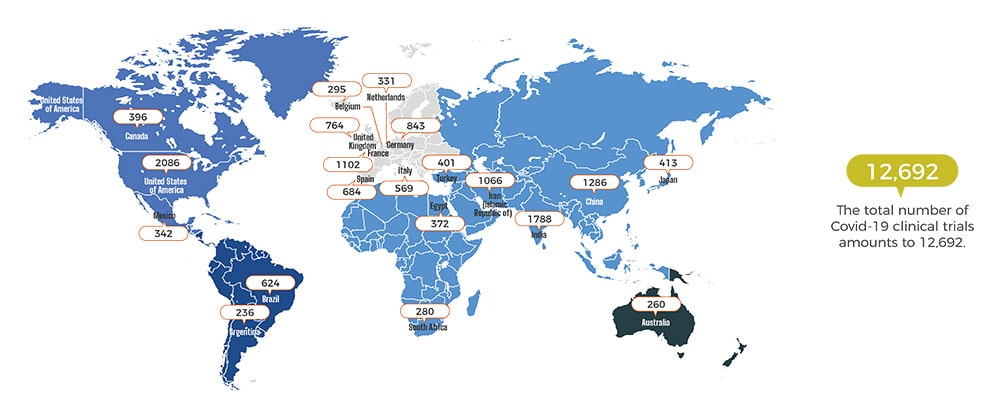Where it is originated from?
In December 2019, Covid appeared in a seafood market located in Wuhan, the capital of Central China’s Hubei province. Researchers traced back to the first patient and he did not come into contact with the seafood market. Up until now, the origin of the virus is still unknown. On December 31, 2019, Chinese citizens reported unusual pneumonia-like symptoms, therefore, China decided to inform the WHO (World Health Organization) about the unknown virus. WHO immediately determines that the unknown virus comes from a genetic family of the deadly outbreak SARS.
What is COVID-19?
On February 11, 2019, the WHO designated a name for the novel virus “COVID-19.” COVID stands for coronavirus disease and 19 is the year that the virus surfaced. Coronavirus is a prevalent virus that can be mistaken for an ordinary flu that causes infection in the respiratory system. The virus can spread through person-to-person contact and the incubation period lasts more than 14 days. The common symptoms that people might experience are fever, cough, and shortness of breath. The virus will become deadly when it detects a weakened immune system, specifically in elderly people. They are at a greater risk because their body is susceptible to infection, respiratory failure, and septic shock.
Timeline
How many people has it affected?

Paving a Path for COVID-19 Vaccine
Researchers are continuing to find a possible vaccine for the COVID-19 Virus and there might be a new lead on it. Jason McLellan, an associate professor of molecular biology at the University of Texas, Austin, states that the COVID-19 contains a protein called “spike.” The COVID-19 virus utilizes the spike proteins to target into the respiratory system of human beings and binds to a receptor (gateway into the human pathway). The receptor will assist the virus merge with the human cells and immediately infects the person that has a weakened immune respiratory system. McLellelan and his team collaborated with NIH (National Institutes of Health) and has pinpointed the specific gene that represents the spike protein. They sent that information to the a company that specifies in gene coding and created replicas of the spike proteins. The company then sent culture dishes (replicas of the coded gene) back to the laboratory for further experimentation. McLellan said that they have the bases down and it will take them from 8-10 months to produce antibodies that can intercept the spike protein from attaching with the COVID-19 virus.
Safety tips
According to the CDC (Center for Disease Control and Prevention), it is best to avoid public transportation, uber/lyft/taxis, or places with a crowd. When you are coughing or sneezing, you should cover when you cough or sneeze into a tissue to prevent spreading germs to other people. The tissue should be thrown away and wash your hands with soap thoroughly for more than 20 seconds or use hand sanitizer that contains 60%-95% of alcohol to kill germs. Refrain from touching your eyes, nose, and mouth because they are susceptible to infections. Make sure to monitor any symptoms that you might experience and seek medical attention if needed because the symptoms for coronavirus is similar to that of the regular flu.
Message from CSOFT
For those who are suffering from the disease, please stay strong. CSOFT is giving our full support to everyone that are experiencing a difficult time. We want all nations to join hands to come up with the best implementation to prevent the virus from spreading and discovering a possible vaccine for the disease. We want you to know that you are not alone, and we will overcome this hardship together.
Reference
2019-nCoV Frequently Asked Questions and Answers. (2020, February 15). Retrieved from https://www.cdc.gov/coronavirus/2019-ncov/faq.html
Al Jazeera. (2020, February 20). Timeline: How China’s new coronavirus spread. Retrieved from https://www.aljazeera.com/news/2020/01/timeline-china-coronavirus-spread-200126061554884.html
Coronavirus disease 2019 (COVID-19) Situation Report – 24. (2020, February 13). Retrieved from https://www.who.int/docs/default-source/coronaviruse/situation-reports/20200213-sitrep-24-covid-19.pdf?sfvrsn=9a7406a4_4
COVID-19 (2019 novel coronavirus) resource center for physicians. (n.d.). Retrieved from https://www.ama-assn.org/delivering-care/public-health/covid-19-2019-novel-coronavirus-resource-center-physicians
Nair, S. (2020, February 20). Coronavirus: A timeline of how the deadly outbreak is evolving. Retrieved from https://www.pharmaceutical-technology.com/news/coronavirus-a-timeline-of-how-the-deadly-outbreak-evolved/
Nazario, B. (2020, January 22). Coronavirus Symptoms, Causes, Treatments, Types. Retrieved from https://www.webmd.com/lung/coronavirus#1
Preventing 2019-nCoV from Spreading to Others. (2020, February 18). Retrieved from https://www.cdc.gov/coronavirus/2019-ncov/hcp/guidance-prevent-spread.html
Wetsman, N. (2020, February 11). Everything you need to know about the coronavirus from China. Retrieved from https://www.theverge.com/2020/1/23/21078457/coronavirus-outbreak-china-wuhan-quarantine-who-sars-cdc-symptoms-risk
